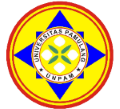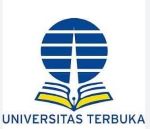Recovery of Post-Pandemic Tourist Visits Rates Through Geopark Destination Attributes
DOI:
https://doi.org/10.54099/ijmdb.v1i1.337Keywords:
Destination Attributes, Loyalty Intention, The Pongkor National Geopark.Abstract
Purpose – The Pongkor National Geopark has a geological peculiarity in the form of an underground gold mine that distinguishes it from other geoparks in Indonesia and the world. The Pongkor National Geopark raised the theme of the evolution of the quarter magmatic arc associated with Pongkor gold mineralization as an icon of geological heritage known to the world. The presence of Geopark status shows that the Pongkor area has prominent geological elements and fulfils archaeological, ecological and cultural values and is able to encourage and empower local communities to contribute in maintaining and improving the function of natural heritage so as to contribute to economic development. However, the COVID-19 pandemic has reduced tourist visits as a consequence of the government's efforts to reduce the spread of the outbreak through closing and restricting tourist areas. The purpose of this study was to analyse the effect of destination attributes on the intention of tourist loyalty in the Pongkor National Geopark Area.
The method used in this research is verification with the population, namely tourists who have visited the Pongkor National Geopark at least 1 time and are willing to make visits in the future. The analytical method used is Spearman rank correlation, coefficient of determination, and t test with a significance level of five percent.
Findings – This research supports previous studies where there is an influence given by the attributes of the destination on the intention of tourist loyalty. The magnitude of the effect given by the destination attribute on loyalty intentions is 57.6%.
References
Albayrak, T., & Caber, M. (n.d.). Current Issues in Tourism The symmetric and asymmetric influences of destination attributes on overall visitor satisfaction. October 2014, 37–41. https://doi.org/10.1080/13683500.2012.682978
Ali, F., Ryu, K., & Hussain, K. (2016). Influence of Experiences on Memories, Satisfaction and Behavioral Intentions: A Study of Creative Tourism. Journal of Travel and Tourism Marketing, 33(1), 85–100. https://doi.org/10.1080/10548408.2015.1038418
Brouder, P. (2020). Reset redux : possible evolutionary pathways towards the transformation of tourism in a COVID-19 world. Tourism Geographies, 0(0), 1–7. https://doi.org/10.1080/14616688.2020.1760928
Cahyadi, H. S., & Newsome, D. (2021). The post COVID-19 tourism dilemma for geoparks in Indonesia. International Journal of Geoheritage and Parks, 9(2), 199–211. https://doi.org/10.1016/j.ijgeop.2021.02.003
Chen, H., & Rahman, I. (2018). Cultural tourism : An analysis of engagement , cultural contact , memorable tourism experience and destination loyalty ☆. Tourism Management Perspectives, 26(October 2017), 153–163. https://doi.org/10.1016/j.tmp.2017.10.006
Chi, C. G. Q., & Qu, H. (2008). Examining the structural relationships of destination image, tourist satisfaction and destination loyalty: An integrated approach. Tourism Management, 29(4), 624–636. https://doi.org/10.1016/j.tourman.2007.06.007
Chiu, W., Zeng, S., & Cheng, P. S. T. (2016). The influence of destination image and tourist satisfaction on tourist loyalty: a case study of Chinese tourists in Korea. International Journal of Culture, Tourism, and Hospitality Research, 10(2), 223–234. https://doi.org/10.1108/IJCTHR-07-2015-0080
Coudounaris, D. N., & Sthapit, E. (2017). Antecedents of memorable tourism experience related to behavioral intentions. Psychology and Marketing, 34(12), 1084–1093. https://doi.org/10.1002/mar.21048
Gössling, S., Scott, D., Hall, C. M., Gössling, S., Scott, D., & Pandemics, C. M. H. (2020). Pandemics , tourism and global change : a rapid assessment of COVID-19. Journal of Sustainable Tourism, 0(0), 1–20. https://doi.org/10.1080/09669582.2020.1758708
Kiatkawsin, K., & Han, H. (2017). An alternative interpretation of attitude and extension of the value – attitude – behavior hierarchy : the destination attributes of Chiang. Asia Pacific Journal of Tourism Research, 0(0), 1–20. https://doi.org/10.1080/10941665.2016.1276466
Kim, J. (2014). The antecedents of memorable tourism experiences : The development of a scale to measure the destination attributes associated with memorable experiences. Tourism Management, 44, 34–45. https://doi.org/10.1016/j.tourman.2014.02.007
Kim, J. H., & Ritchie, J. R. B. (2014). Cross-Cultural Validation of a Memorable Tourism Experience Scale (MTES). Journal of Travel Research, 53(3), 323–335. https://doi.org/10.1177/0047287513496468
Kim, K. H., & Park, D. B. (2017). Relationships Among Perceived Value, Satisfaction, and Loyalty: Community-Based Ecotourism in Korea. Journal of Travel and Tourism Marketing, 34(2), 171–191. https://doi.org/10.1080/10548408.2016.1156609
Krishna Yuliawati, A., Nur Pribadi, K., & Sapari Dwi Hadian, M. (2016). Geotourism Resources as Part of Sustainable Development in Geopark Indonesia. 15, 962–965. https://doi.org/10.2991/gcbme-16.2016.178
Kwanisai, G., & Vengesayi, S. (2016). DESTINATION ATTRIBUTES AND OVERALL DESTINATION SATISFACTION IN ZIMBABWE. 21, 17–28.
Lee, T. H. (2009). A Structural model to examine how destination image, attitude, and motivation affect the future behavior of tourists. Leisure Sciences, 31(3), 215–236. https://doi.org/10.1080/01490400902837787
Lew, A. A. (1987). A framework of tourist attraction research. Annals of Tourism Research, 14(4), 553–575. https://doi.org/10.1016/0160-7383(87)90071-5
Loureiro, S. M. C. (2014). The role of the rural tourism experience economy in place attachment and behavioral intentions. International Journal of Hospitality Management, 40, 1–9. https://doi.org/10.1016/j.ijhm.2014.02.010
Mansour, J. S. A., & Ariffin, A. A. M. (2017). The Effects of Local Hospitality, Commercial Hospitality and Experience Quality on Behavioral Intention in Cultural Heritage Tourism. Journal of Quality Assurance in Hospitality and Tourism, 18(2), 149–172. https://doi.org/10.1080/1528008X.2016.1169474
Moon, H., & Han, H. (2018). Destination attributes influencing Chinese travelers’ perceptions of experience quality and intentions for island tourism: A case of Jeju Island. Tourism Management Perspectives, 28(August), 71–82. https://doi.org/10.1016/j.tmp.2018.08.002
Moon, H., & Han, H. (2019). Tourist experience quality and loyalty to an island destination: the moderating impact of destination image. Journal of Travel and Tourism Marketing, 36(1), 43–59. https://doi.org/10.1080/10548408.2018.1494083
Nikolova, V., & Sinnyovsky, D. (2019). Geoparks in the legal framework of the EU countries. Tourism Management Perspectives, 29(November 2018), 141–147. https://doi.org/10.1016/j.tmp.2018.11.007
Nugroho, Y., & Negara, S. D. (2020). COVID-19 ’ s Impact on Micro, Small, & Medium Enterprises and Tourism in Indonesia. ISEAS Yusof Ishak Institute, 124, 1–11.
Ozdemir, B., Aksu, A., Ehtiyar, R., Çizel, B., Çizel, R. B., & Içigen, E. T. (2012). Relationships Among Tourist Profile, Satisfaction and Destination Loyalty: Examining Empirical Evidences in Antalya Region of Turkey. Journal of Hospitality Marketing and Management, 21(5), 506–540. https://doi.org/10.1080/19368623.2012.626749
Ozturk, U. A., & Gogtas, H. (2016). Destination attributes , satisfaction , and the cruise visitor ’ s intent to revisit and recommend. 6688(March). https://doi.org/10.1080/14616688.2015.1124446
Papadimitriou, D., Apostolopoulou, A., & Kaplanidou, K. (Kiki). (2015). Destination Personality, Affective Image, and Behavioral Intentions in Domestic Urban Tourism. Journal of Travel Research, 54(3), 302–315. https://doi.org/10.1177/0047287513516389
Pratminingsih, S. A., Rudatin, C. L., & Rimenta, T. (2014). Roles of Motivation and Destination Image in Predicting Tourist Revisit Intention : A Case of Bandung – Indonesia. 5(1). https://doi.org/10.7763/IJIMT.2014.V5.479
Prayag, G., & Ryan, C. (2012). Antecedents of tourists’ loyalty to mauritius: The role and influence of destination image, place attachment, personal involvement, and satisfaction. Journal of Travel Research, 51(3), 342–356. https://doi.org/10.1177/0047287511410321
Rama, S., & Wulung, P. (2019). Geotourism Reinterpretation towards Natural Tourist Attractions in Bandung Basin , West Java , Indonesia. 259(Isot 2018), 278–282.
Schlesinger, W. (2020). Exploring the links between destination attributes , quality of service experience and loyalty in emerging Mediterranean destinations. Tourism Management Perspectives, 35(June 2019), 100699. https://doi.org/10.1016/j.tmp.2020.100699
Sharma, P., & Nayak, J. K. (2019a). The role of destination image as a mediator between tourists’ emotional experiences and behavioral intentions: A study of wellness tourism. Journal of Destination Marketing and Management, January, 1–12. https://doi.org/10.1016/j.jdmm.2019.02.002
Sharma, P., & Nayak, J. K. (2019b). Understanding memorable tourism experiences as the determinants of tourists’ behaviour. International Journal of Tourism Research, 21(4), 504–518. https://doi.org/10.1002/jtr.2278
Shuib, A., Mahdzar, M., Ramachandran, S., Herman, S., & Afandi, M. (2015). The Role of Destination Attributes and Memorable Tourism Experience in Understanding Tourist Revisit Intentions. December 2017. https://doi.org/10.5829/idosi.aejaes.2015.15.s.205
Singh, R. (2019). Destination Attributes to Measure Tourist Revisit Intention : A Scale Development. 12(12). https://doi.org/10.1177/0972150918825329
Suhartanto, D., Brien, A., Primiana, I., Wibisono, N., & Triyuni, N. N. (2019). Tourist loyalty in creative tourism: the role of experience quality, value, satisfaction, and motivation. Current Issues in Tourism, 0(0), 1–13. https://doi.org/10.1080/13683500.2019.1568400
Sulistyadi, B. (2019). THE IMPACT OF SITE ATTRACTION AND SERVICE QUALITY ON LOYALTY THROUGH SATISFACTION : A CASE STUDY IN GUNUNG SEWU UNESCO GLOBAL GEOPARK , INDONESIA. 25(2).
Whyte, L. J., Packer, J., Ballantyne, R., Whyte, L. J., & Packer, J. (2018). Cruise destination attributes : measuring the relative importance of the onboard and onshore aspects of cruising and onshore aspects of cruising. Tourism Recreation Research, 0(0), 1–13. https://doi.org/10.1080/02508281.2018.1470148
Wu, H. C., & Li, T. (2017). A Study of Experiential Quality, Perceived Value, Heritage Image, Experiential Satisfaction, and Behavioral Intentions for Heritage Tourists. In Journal of Hospitality and Tourism Research (Vol. 41, Issue 8). https://doi.org/10.1177/1096348014525638
Wulung, S. R. P., Yuliawati, A. K., & Hadian, M. S. D. (2019). Geotourism Potential Analysis of North Kalimantan. 259(Isot 2018), 283–287. https://doi.org/10.2991/isot-18.2019.63
Yeh, S. S. (2020). Tourism recovery strategy against COVID-19 pandemic. Tourism Recreation Research, 0(0), 1–7. https://doi.org/10.1080/02508281.2020.1805933
Yoon, Y., & Uysal, M. (2005). An examination of the effects of motivation and satisfaction on destination loyalty : a structural model. 26, 45–56. https://doi.org/10.1016/j.tourman.2003.08.016
Zhang, H., Wu, Y., & Buhalis, D. (2018). A model of perceived image, memorable tourism experiences and revisit intention. Journal of Destination Marketing and Management, 8(June), 326–336. https://doi.org/10.1016/j.jdmm.2017.06.004
Downloads
Published
How to Cite
Issue
Section
License
Copyright (c) 2022 International Journal of Management and Digital Business

This work is licensed under a Creative Commons Attribution-NonCommercial 4.0 International License.






